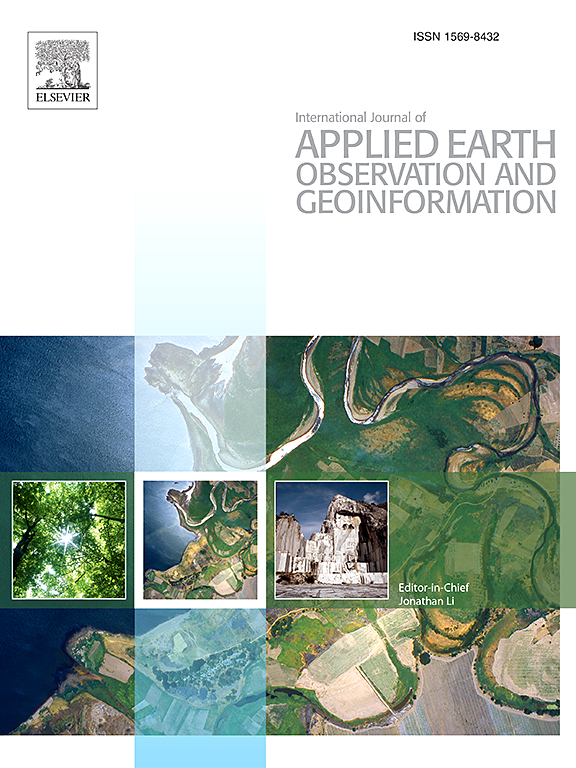Evaluating spectral indices for water extraction: Limitations and contextual usage recommendations
IF 7.6
Q1 REMOTE SENSING
International journal of applied earth observation and geoinformation : ITC journal
Pub Date : 2025-03-29
DOI:10.1016/j.jag.2025.104510
引用次数: 0
Abstract
With the intensification of climate change and human activities, water resource shortages, floods, and water quality anomalies are becoming increasingly serious. It is urgent to ensure the effective realization of water resource management, flood monitoring, and water quality assessment through fine-scale monitoring of water body spatial distribution and dynamics. Currently, various technologies have been applied to water information monitoring, with remote sensing-based spectral index methods being widely used due to their simplicity, low cost, and large-scale observation capabilities. However, the wide variety of existing water spectral indices, each suited to different scenarios and objectives, makes it challenging for ordinary users to select the most appropriate index and determine its optimal usage (i.e., threshold settings). This study addresses these challenges by evaluating the performance and applicability of 15 widely used water detection indices, using Sentinel-2 imagery across 14 representative global regions. The results revealed that the performance of water indices varied across different scenarios. Common issues include misidentification in high-reflectance backgrounds (e.g., buildings and snow), low-reflectance backgrounds (e.g., shadows), and omission errors for water bodies with high chlorophyll content. On this basis, this study provides a recommended table for water body index selection in different scenarios and a recommended range table for index thresholds, and point out key directions for future development of water body indices. This study offers valuable guidance for the selection and use of water body indices in practical application, helping to enhance the accuracy and efficiency of fine-scale monitoring of water bodies.
求助全文
约1分钟内获得全文
求助全文
来源期刊

International journal of applied earth observation and geoinformation : ITC journal
Global and Planetary Change, Management, Monitoring, Policy and Law, Earth-Surface Processes, Computers in Earth Sciences
CiteScore
12.00
自引率
0.00%
发文量
0
审稿时长
77 days
期刊介绍:
The International Journal of Applied Earth Observation and Geoinformation publishes original papers that utilize earth observation data for natural resource and environmental inventory and management. These data primarily originate from remote sensing platforms, including satellites and aircraft, supplemented by surface and subsurface measurements. Addressing natural resources such as forests, agricultural land, soils, and water, as well as environmental concerns like biodiversity, land degradation, and hazards, the journal explores conceptual and data-driven approaches. It covers geoinformation themes like capturing, databasing, visualization, interpretation, data quality, and spatial uncertainty.
 求助内容:
求助内容: 应助结果提醒方式:
应助结果提醒方式:


